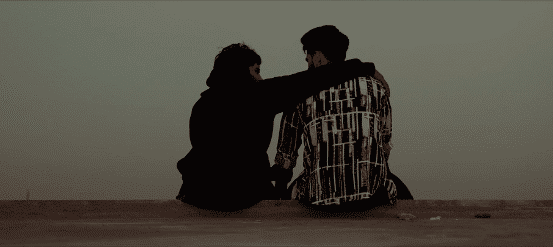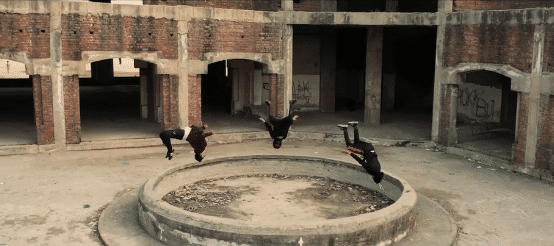Having lost a brother and two sisters to the 2005 Kashmir earthquake, Asim Khan’s family was fragmented from a young age. While some of his family did manage to survive the catastrophe, he still grew up with a yearning for what was gone.
For Asim, sports were the greatest compensation for the passing of his siblings. Little did he know, it would be through sports that he would find a new kind of family.
Asim Khan Loses Much of His Family to the Kashmir Earthquake of 2005
On October 8, 2005, Pakistan was hit by the Kashmir earthquake, one of the deadliest quakes in recorded history. Centered in the city of Muzaffarabed, it quickly spread to neighboring regions. Its magnitude of 7.6 and maximum Mercalli intensity of XI (Extreme) made it the most destructive recorded earthquake to ever strike South Asia. Time Magazine even included it on their list of the 10 deadliest earthquakes of all time.
As a result of the catastrophe, over 86,000 people died, and a similar number were injured. Hospitals crumbled. The homes of millions were destroyed, forcing people to either become homeless or live within military camps.

Asim and his surviving family members spent three to months in a camp that offered resources and education. While many news outlets reported horror stories of life within the camps, Asim claims that he and his family were treated with respect while there.
Asim lost neighbors, friends, and three siblings. As a result, he grew up feeling as though his family was incomplete. However, all that changed when he found a new community through parkour. His best friend Muhammad Awais in particular is as much a part of Asim’s family as anyone blood-related.
Asim Khan Meets Muhammad Awais
To Asim, Muhammad Awais is more than a best friend. He is a brother Asim never had. In addition to having the shared experience of enduring the 2005 Kashmir earthquake, the two bond over their love of free-running. In fact, Muhammad played an integral role in introducing Asim to parkour.
Asim discovered parkour through his involvement in taekwondo. At a fighting tournament in which Asim was competing, freerunners were performing parkour stunts as an opening act, warming the crowd up for the fights to come.

Asim was enthralled by the parkour performers, one of whom was Muhammad. The two struck up a friendship.
Asim was, at the time, nowhere near Muhammad’s parkour skill level. But Muhammad was more than willing to teach him the basics. To this day, the pair freerun together, always learning new stunts from each other.
What Is Parkour?
According to Parkour UK, “Parkour / Freerunning / Art du Deplacement is the primarily non-competitive physical discipline of training to move freely over and through any terrain using only the abilities of the body, principally through running, jumping, climbing and quadrupedal movement.”
Parkour’s roots can be traced to France in the 1990s, when stuntman David Belle founded Yamasaki, essentially the first parkour crew. Originally called l’art du déplacement (“the art of displacement”), parkour was largely an underground phenomenon until the late 2000s, when free-running clips started to go viral on the internet.

Similar to martial arts, parkour is guided by a philosophy: according to Belle, it is more a state of mind than a set of actions. The physical obstacles that one wades through while performing parkour stunts are metaphors for obstacles in life; to be successful at parkour, one must think critically and quickly. One wrong move could equate to traumatic injury.
Another parkour runner Andy Tran expands upon Belle’s philosophy, claiming that parkour is “a means of reclaiming what it means to be a human being. It teaches us to move using the natural methods that we should have learned from infancy. It teaches us to touch the world and interact with it, instead of being sheltered by it.”
Asim utilizes the philosophies of parkour to overcome the obstacles that life has thrown at him.
Asim Khan Grows His Parkour Family
Through parkour, Asim claims, “I’ve found my destiny. And most of all, I’ve found my family.” Asim and Muhammad have assembled a team of like-minded individuals who teach each other the art of parkour.
In addition to being freerunners, many members of Asim’s team are also stuntmen and breakdancers. Their crew is about 20 deep, though they are looking to expand. They are willing to accept anyone with a commitment to learning the art form.

At first, the team was made up solely of Asim and Muhammad. But through performing at events and festivals, they have been able to recruit new members. Asim’s crew is connected to other parkour crews across the country: “If there’s a gig requiring 80 people, we can get 80 people,” he says.
Asim Khan on the Importance of Friendship
Asim’s friends have helped him to recover from some of the worst experiences of his life, from the devastation of the Kashmir earthquake to his losing his job due to the Covid-19 pandemic. His relationship with Muhammad is proof that blood relation is not a requirement for brotherhood.
“[Muhammad] is the brother who gave me the motivation I always needed,” Asim says. “He introduced me to new ways of running. He reminded me that I never needed a platform. He reminded me of the most important thing: that I am a freerunner.”